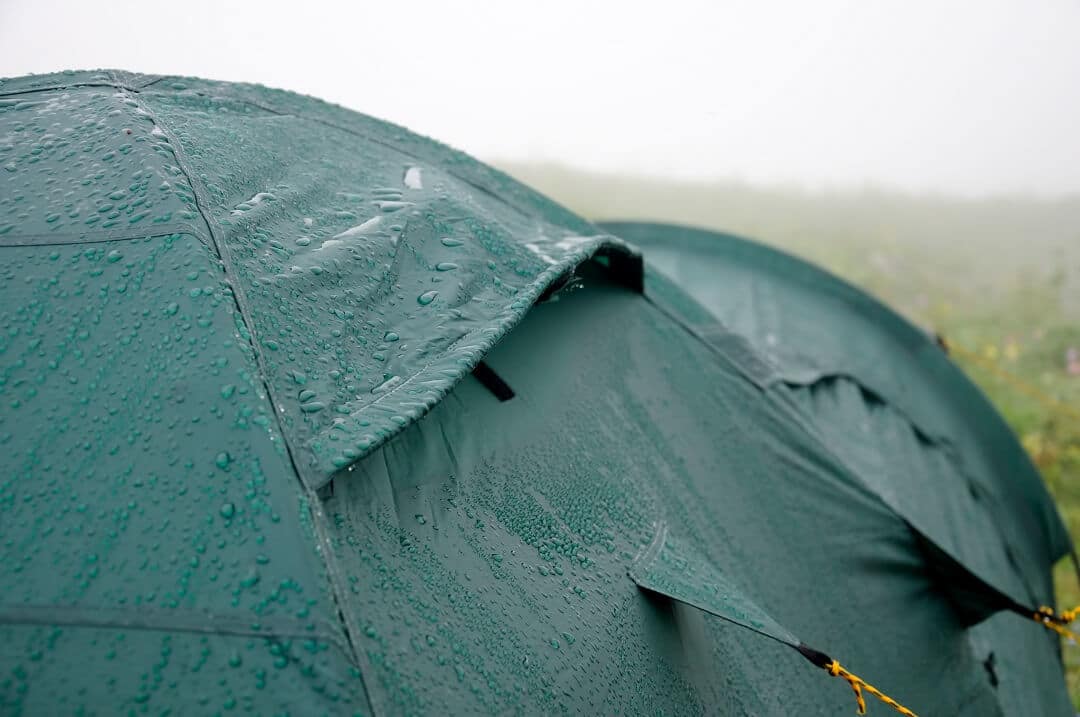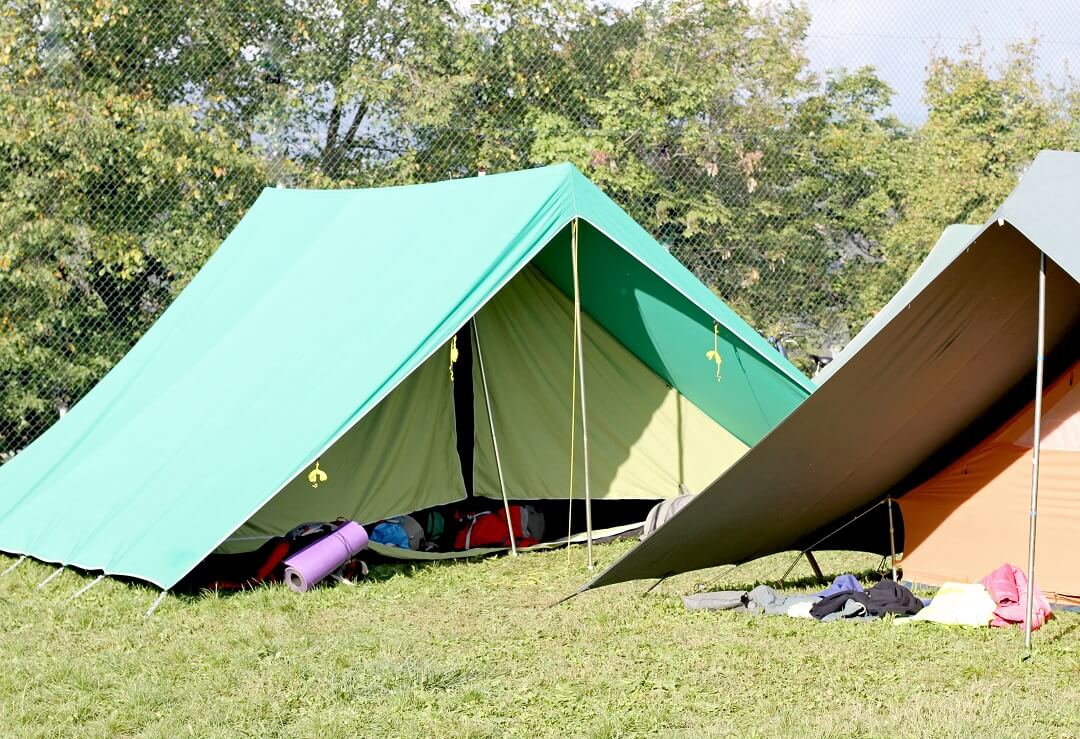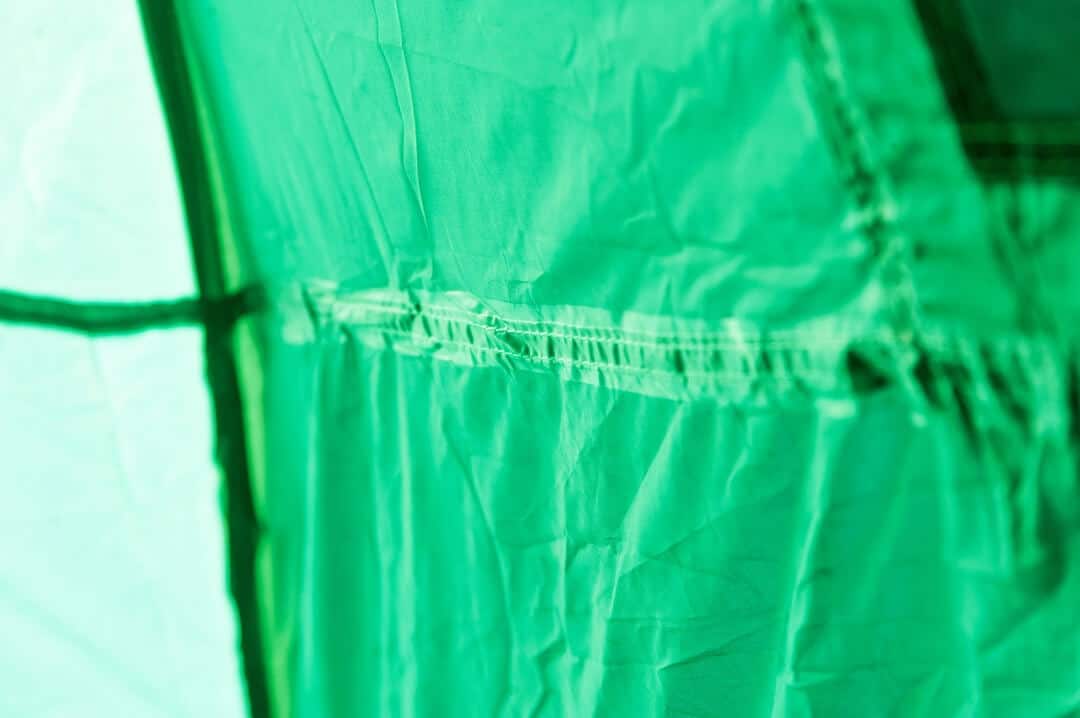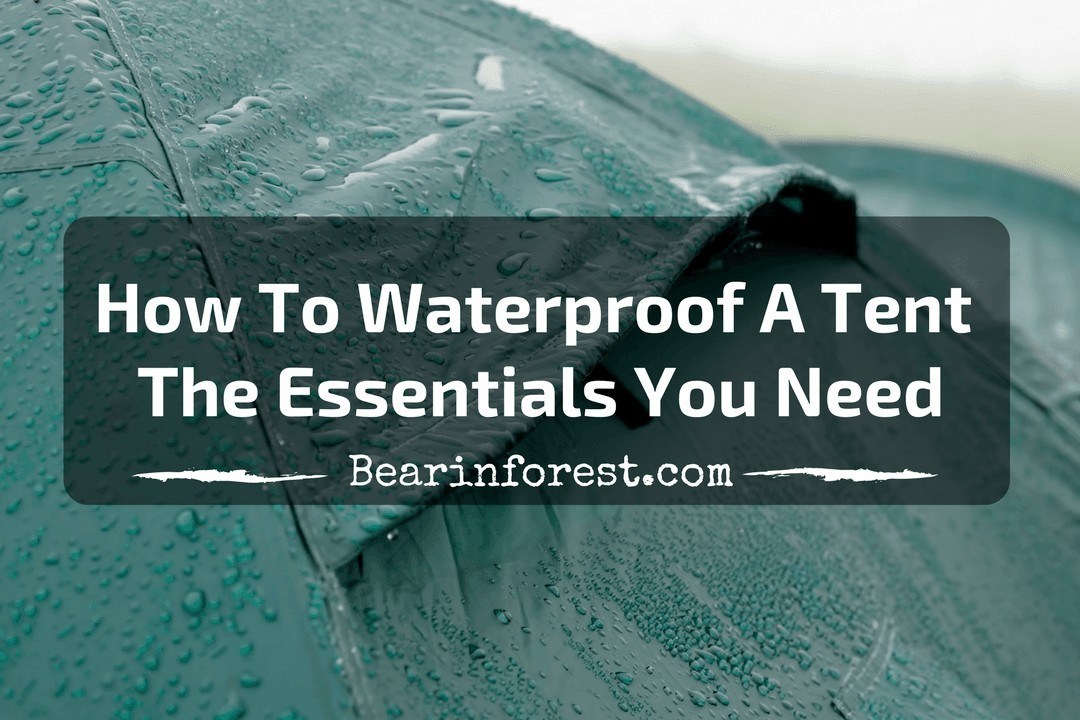If you're planning on going camping, then one of the most important things you'll need to take care of would be your tent! Your tent is your personal shelter while you're outdoors, ensuring safety and protection against anything that may happen in the woods or mountains.
Whether it's rain or shine, a tent will keep you protected. But the one thing that may pose a problem would be wet ground or extremely wet weather conditions. So it's best for you to learn how to waterproof a tent.
But how exactly should you waterproof your tent to avoid any water or liquid from flooding? Read on as I will show you what you need to know!
Why Waterproof Your Tent?
You're probably wondering: My tent claims to be waterproof and protected from rain, so why should I learn how to waterproof a tent?

Extra caution goes a long way! Also, this is ideal for learning for those who have basic tents that aren't as waterproof as more expensive ones.
So, why should you learn how to waterproof a tent? Here are some of the benefits:
Rain
We all hate rainy days during camping season. But what's worse is when your tent starts to leak from the ceiling! When you waterproof your tent, you won't need to worry about raindrops falling inside your tent and keeping you up.
Ground
The first rule when camping is never to set your tent on the wet ground. But what if it is inevitable? If you waterproofed your tent beforehand, there's no problem with setting up camp on wet ground and ruining the quality of your tent or sleeping uncomfortably.
Affordable And Quick
Waterproofing a tent is very easy to do and will only require minimal items and time. Also, it's affordable, making you save up on purchasing a whole new tent. It saves you money from having to get a waterproof tent, even if your current one is still in excellent condition.
How To Waterproof Your Tent?

Before we start, here are the things you will need to prepare to waterproof your tent:
Rainfly - use for the top of your tent. You can also use a basic tarp as another alternative.
Groundcloth - add under your tent. Just like the rainfly, you can use a basic tarp as an alternative.
Seams - can help patch up any damage or holes.
Waterproof Spray - This camping product is another essential to keeping your tent water-resistant.
Tarp - A basic tarp can be used as an addition to the materials above, or as a replacement.
Read more about waterproof hiking boots
Steps On How To Waterproof Your Tent
Once you have gathered all the materials, follow these steps on how to waterproof your tent:
1. Adding The Rainfly
When adding the rainfly, make sure that it’s on top of the tent and covers the entire top of the tent. Rainfly will help avoids rain from pouring in.
Once you have correctly positioned the rainfly, you can tie the strings very tightly, double-knotting them to avoid having to go out if extreme winds blow it away.
I recommend that you add the rainfly before it rains. If you expect rain to arrive, you can attach the rainfly after assembling your tent.
2. Putting The Groundcloth

No one wants to sleep on the wet ground, which is correctly what the groundcloth is for? But don’t just add it to your tent, as it might accumulate water that enters your shelter without you knowing.
You will need to ensure that both the groundcloth and tent connected in such a way that they become close to one piece.
Tuck the groundcloth into the seam of your tent and seal it with a sealant. For added protection, add a tarp under the groundcloth and stitch it together (done at home). The latter suggestion is more suitable for first tents.
3. Waterproofing And Adding The Seams
This is the most difficult part when waterproofing your tent. Sealing the seams will ensure that little to NO water enters the tent.
And that’s all you need to do to waterproof your tent and keep you and the shelter protected from any water or liquid that comes its way.
First, flip your tent inside out to add the sealant INSIDE the tent's seams quickly. If needed, clean the seams with a cotton swab and alcohol to remove the dirt (dirt decreases the water-resistance).
Add an even and smooth amount of sealant around the seams inside your tent. Let it dry for about a few minutes.
Once the sealant is dry, use the waterproof spray and apply it to the seams outside of your tent, letting that dry as well. Take note that sealants are for inside tents, while waterproof spray use for the outer seams.
For newer tents, you will only need to add sealants to the rainfly and groundsheet. Also, make sure you do this in your yard or somewhere well-ventilated, as the chemicals may be harmful.
After that, clean your tent, and it is now water-resistant and ready for your next adventure!

The best waterproofing advice is to prevent any leaks before it happens. That means when you are in the campsite, choose ground that is under shade, without wet soil, and less debris that may damage your tent.
Also, make sure that you take good care of your tent and avoid overusing or abusing it, as it will end up wearing out even quicker than promised.
Conclusion
Before you go camping, one of the most important things you'll need to learn about would be how to waterproof a tent. Through a tent less susceptible to rainy weather and wet ground, you can enjoy a warm and cozy place while you are living in the rough!
I hope that this article on how to waterproof a tent helps you become more knowledgeable on improving your tent's state, protecting you along the way. So what are you waiting? Try doing these things to waterproof your tent today!
Do you have any ideas or questions on how to waterproof a tent? Then comment down below. We would like to hear your thinking!
